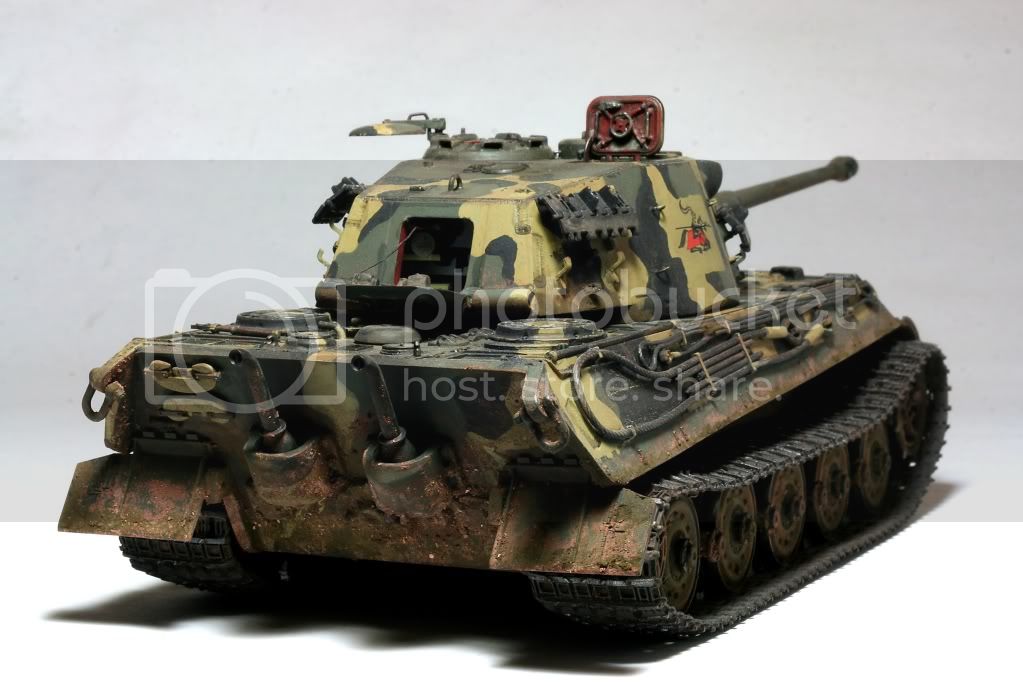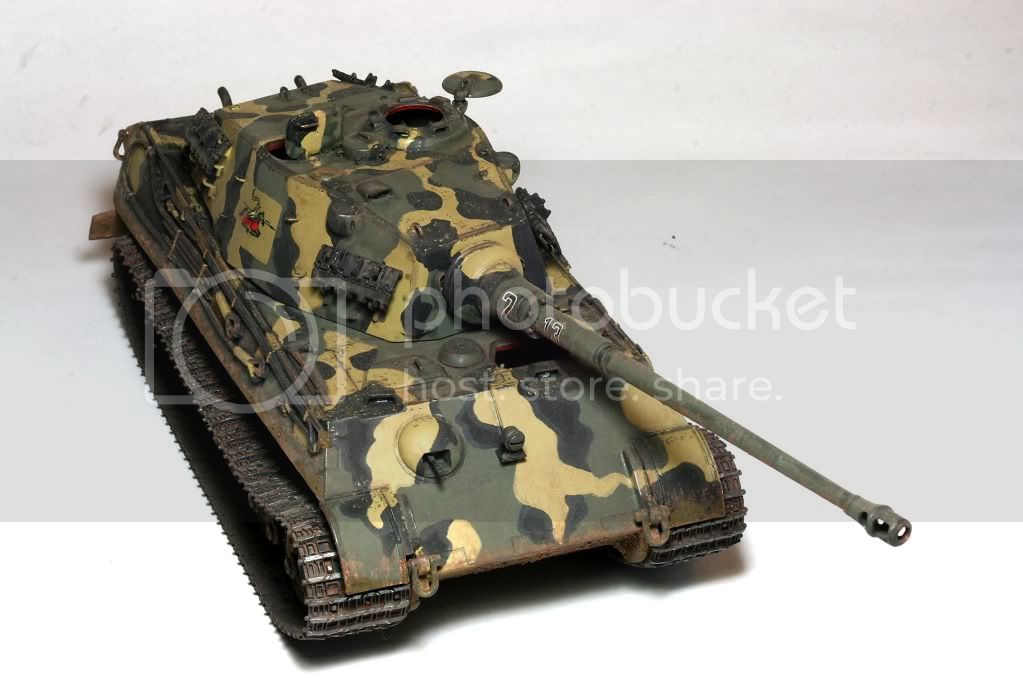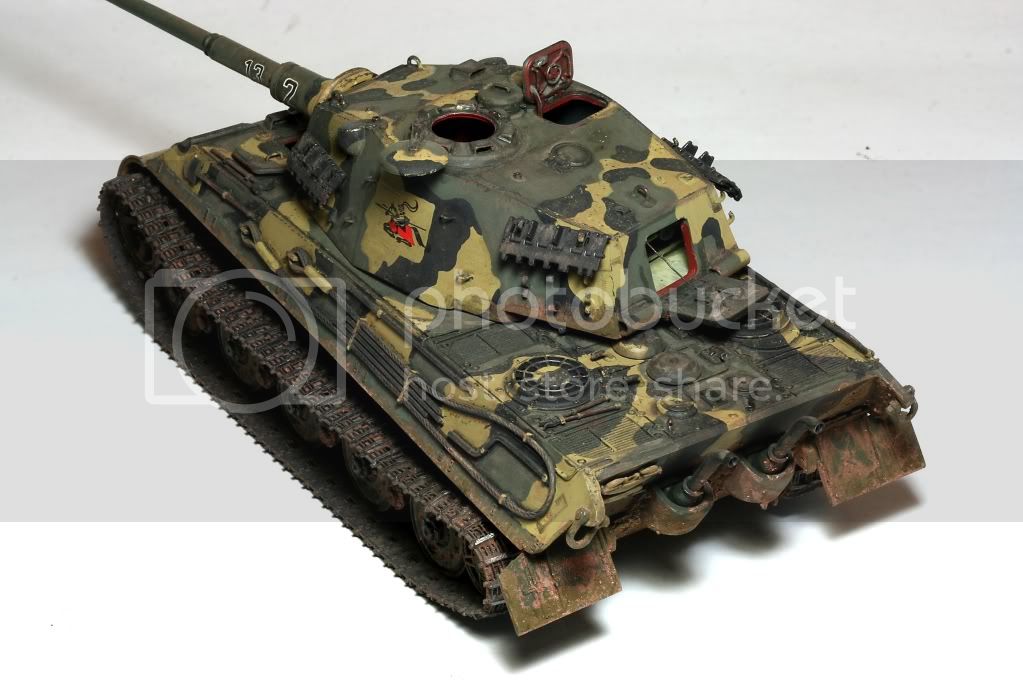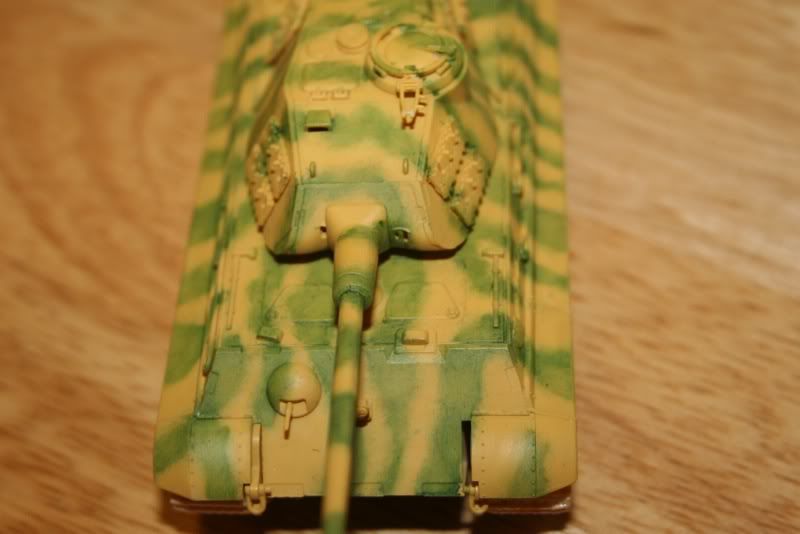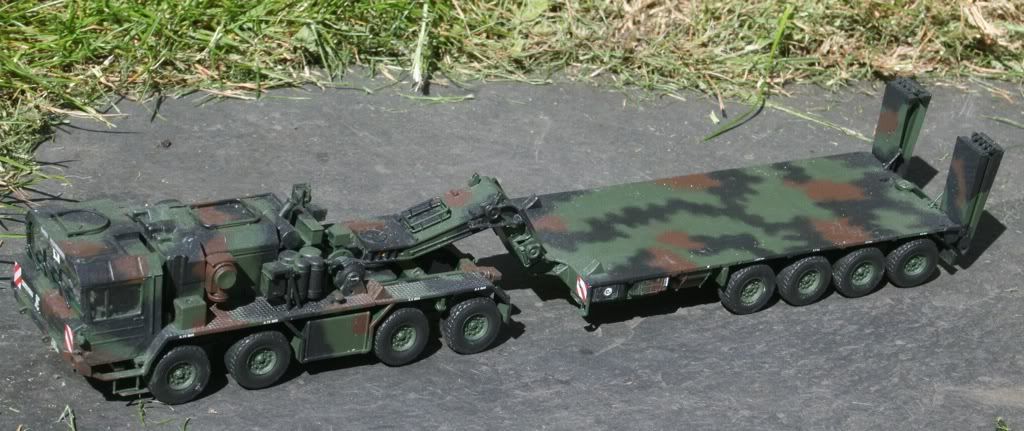This is the first time I am publicly posting my works in progress so please be gentle with me.

These are two very different King Tigers I built, one in mid-2011 and the other recently "completed" in March 2012. Both are not intended to be 100% accurate detail wise; rather they are intended as fun builds for me to learn painting and weathering techniques.
These are only the second and third 1:35 scale models I have built so far. I used to build 1:72 scale stuff.
Both models have been hand painted with a paint brush, no airbrush was used.
The first one is my take on the famous King Tiger Anneliese after the winter between 1944 and 1945. Since no photos exist of the vehicle without a coat of white wash, I took some artistic liberty on guessing what the paint scheme is underneath the winter camouflage.
My intention is to depict this vehicle after the German capitulation in Hungary, in either the fall of 1945 or spring of 1946. The tank was captured by the Soviets and used as a scrap yard trophy in a Hungarian Army base until it was scrapped late 1946.
The hastily painted on winter white wash has worn off and the underlying paint and zimmerit was subject to abuse of curious onlookers scampering on and off the tank. So this is a hypothetical 1946 panzer.


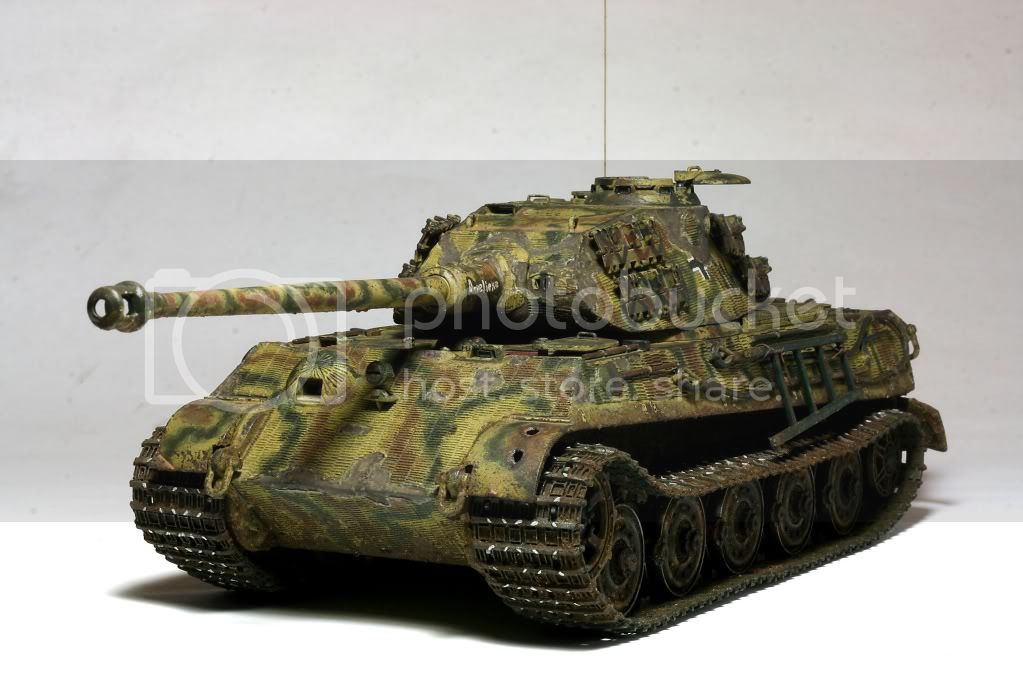
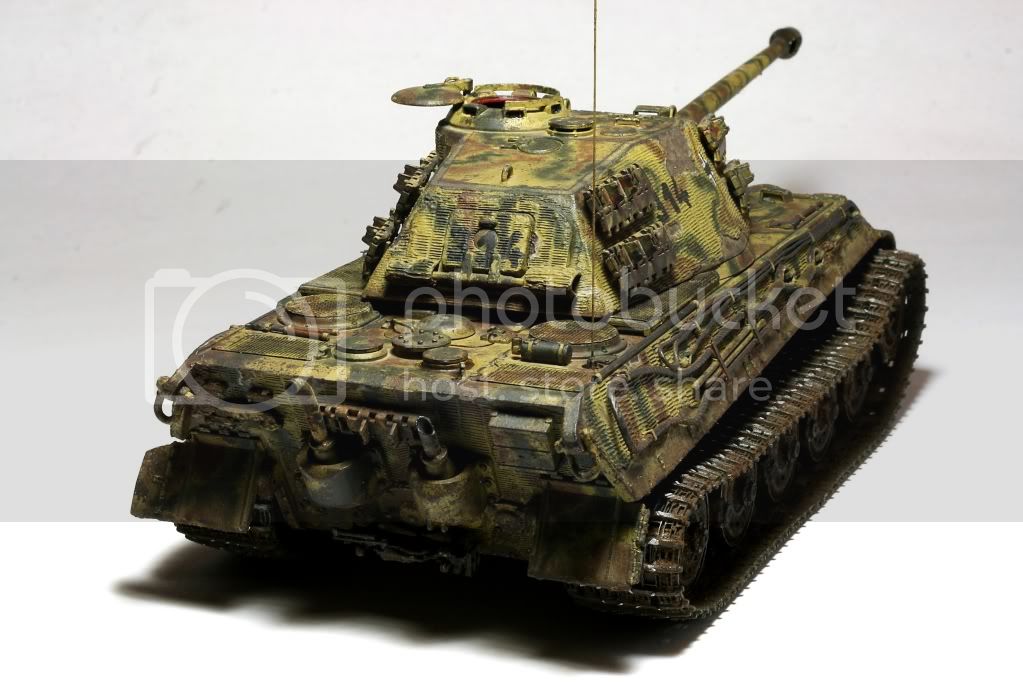


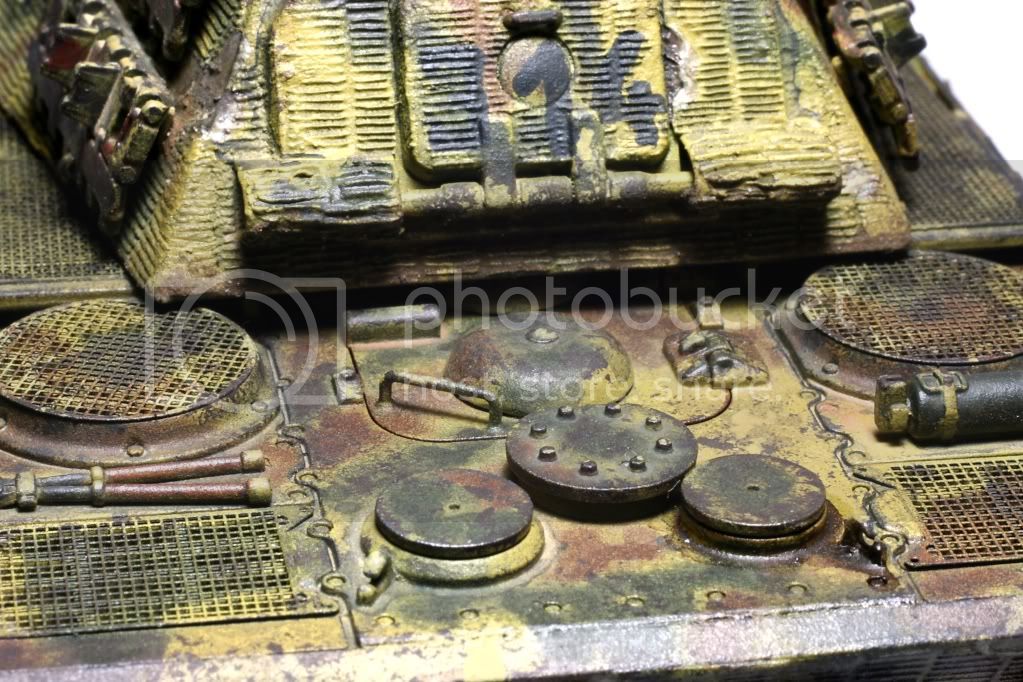
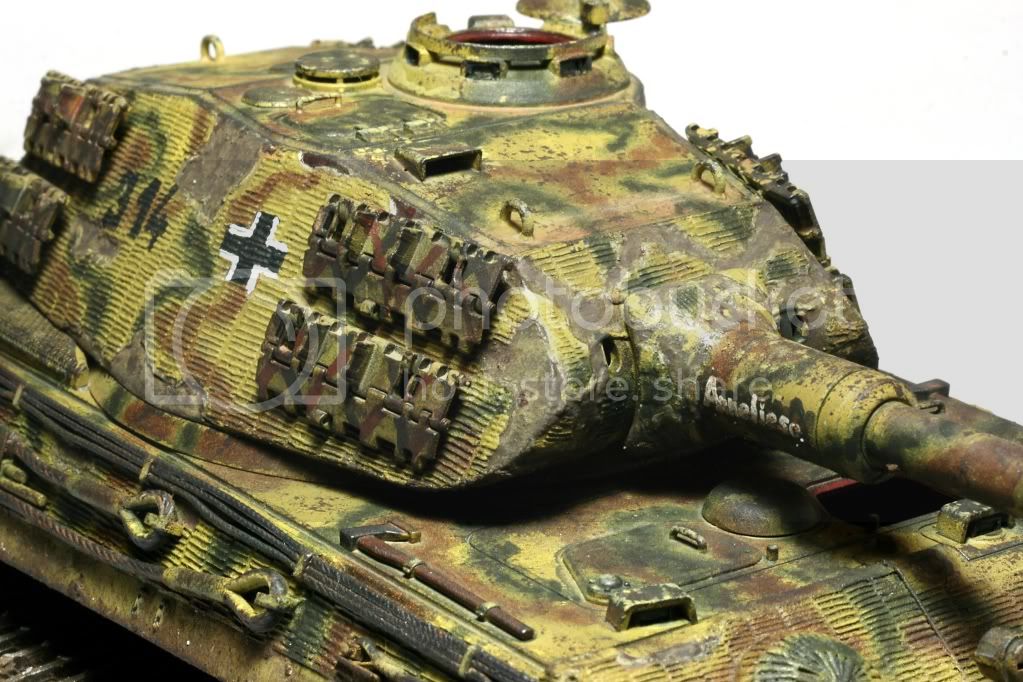

Again, this tank was fully hand painted using my experimental method of applying soft edged camouflage without an airbrush. This method was inspired by Brent Watterson's amazing Braille Scale hand painted wargaming pieces. I just tried doing it on a larger scale.
I will post more pictures of my other King Tiger later.
Thanks!
+Y.C.









